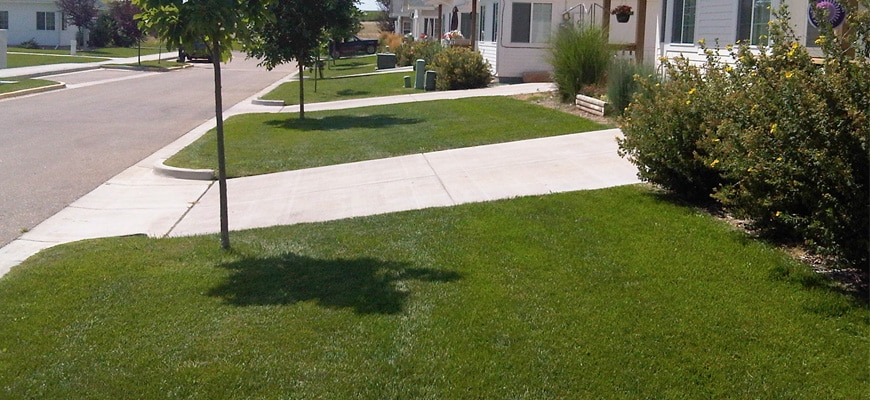Search
Categories
- Blog (13)
- Lawn Care Services (18)
- Residential Landscape (5)
- Residential Lawn Care (12)
Recent Posts
- 10 Benefits of Hiring a Professional Lawn Mowing Service in Loveland
- The Benefits of Hiring a Commercial Lawn Service in Longmont
- How to Keep Your Loveland Lawn Looking Beautiful with Hills Mowing Service
- What You Need to Know About Residential Lawn Service from Hills Mowing Service
- The Benefits of Hiring Hills Mowing Service for Your Lawn Care Needs in Loveland
Best Times of the Year to Fertilize Your Lawn | Hill’s Mowing
June 1, 2022

Grass fertilizer treats your lawn by supplying it with the nutrients it needs to thrive and maintain a healthy, green look. Every fertilizer contains a unique combination of nutrients. These components work together to create a lush, green yard that is resistant to weeds like crabgrass and promotes healthy growth.
While prepping your lawn is essential, it should not be done at any time of year. Before deciding whether to treat, consider the kind of grass you have and the environment in your location. This article outlines when it’s best to apply fertilizer to your grass lawn.
Fertilizer Application Timing
The precise time is determined by your location and the kind of turf you have. Consult a professional at a nearby garden store or helpful expanding office for advice on the best ideas for your location. When you’ve located the ideal time to apply it, plan to coincide it with a brief period of rain. If you don’t, dampen your lawn with a quarter-inch of water before spreading fertilizer. Contact our experts in Loveland, Colorado to get the best lawncare services.
Spring
Due to a delayed fertilizer delivery, caring for your yard in the fall, especially late in the season, may encourage spring grass growth. Fertilizer companies recommend late-winter preparation, but experts disagree.
When cool-season grasses bloom in the spring, the root system expands and carbohydrates accumulate. Hold off on preparing the yard until pre-summer (late May or early June), not long before the start of summer heat and after the grass has prospered.
Treating your lawn now might help it prepare for the late spring. During the scorching late spring months, grass will begin to reduce carb production and consume its stockpiles. A slow-delivery polymer-covered fertilizer might nourish grass for up to 12 weeks.
Summer
Warm-season grasses thrive in the heat of summer and can be planted throughout the season. Cool-season grasses, on the other hand, are struggling to survive in the late April heat. If you reside in an area where cool-season grasses are required for your yard seed mix, avoid preparing your lawn in the middle or end of summer. Until September, a cool-season lawn should just need watering and pest management.
Fall
Most yard experts say to use a small amount of “turf-manufacturer” fertilizer when the grass is still growing. This will encourage the growth of strong subsurface roots before winter and the restart of the development cycle in the spring. You are not attempting to recreate the presence of your yard from the middle of the year. As winter approaches, your yard’s growth often slows and its green radiance fades.
Winter
Since most grasses are sluggish in the winter, fertilizer is of little use. However, mild winters in many parts of the nation allow warm-season grasses to emerge from dormancy in late January. You can help your grass get back to life after being dormant all winter by giving it the vitamins it needs.
Preparing your yard is an important part of maintaining it since it encourages robust root development and keeps it green. Regardless, selecting the correct fertilizer and applying it at the proper time is critical. If you have cool-season grass, apply a light layer in the spring and a heavy application in the autumn. Warm-season grasses should be applied according to bundle bearings throughout the spring.
Lawncare Experts
If you are unsure of how to properly take care of your lawn, skilled grass care firms like Hills Mowing and Landscape in Loveland, Colorado can tailor a treatment plan to your yard’s specific needs.



